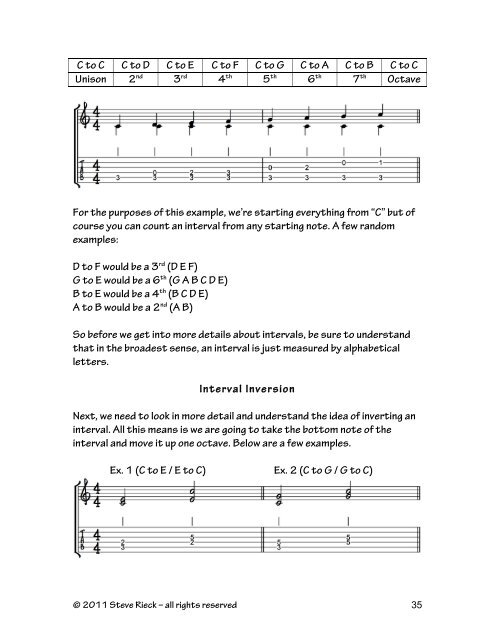Fretboard Evolution Vol. I - Steve Rieck
Fretboard Evolution Vol. I - Steve Rieck
Fretboard Evolution Vol. I - Steve Rieck
You also want an ePaper? Increase the reach of your titles
YUMPU automatically turns print PDFs into web optimized ePapers that Google loves.
C to C C to D C to E C to F C to G C to A C to B C to C<br />
Unison 2 nd 3 rd 4 th 5 th 6 th 7 th Octave<br />
For the purposes of this example, we’re starting everything from “C” but of<br />
course you can count an interval from any starting note. A few random<br />
examples:<br />
D to F would be a 3 rd (D E F)<br />
G to E would be a 6 th (G A B C D E)<br />
B to E would be a 4 th (B C D E)<br />
A to B would be a 2 nd (A B)<br />
So before we get into more details about intervals, be sure to understand<br />
that in the broadest sense, an interval is just measured by alphabetical<br />
letters.<br />
Interval Inversion<br />
Next, we need to look in more detail and understand the idea of inverting an<br />
interval. All this means is we are going to take the bottom note of the<br />
interval and move it up one octave. Below are a few examples.<br />
Ex. 1 (C to E / E to C) Ex. 2 (C to G / G to C)<br />
© 2011 <strong>Steve</strong> <strong>Rieck</strong> – all rights reserved 35


